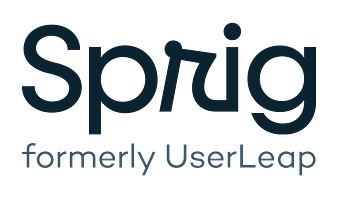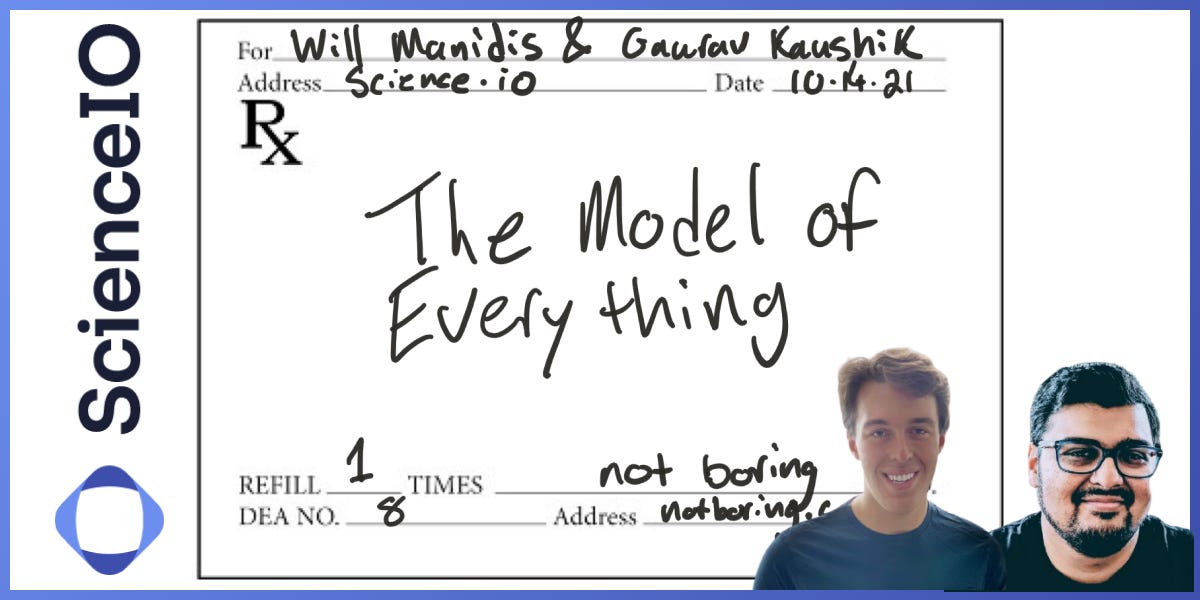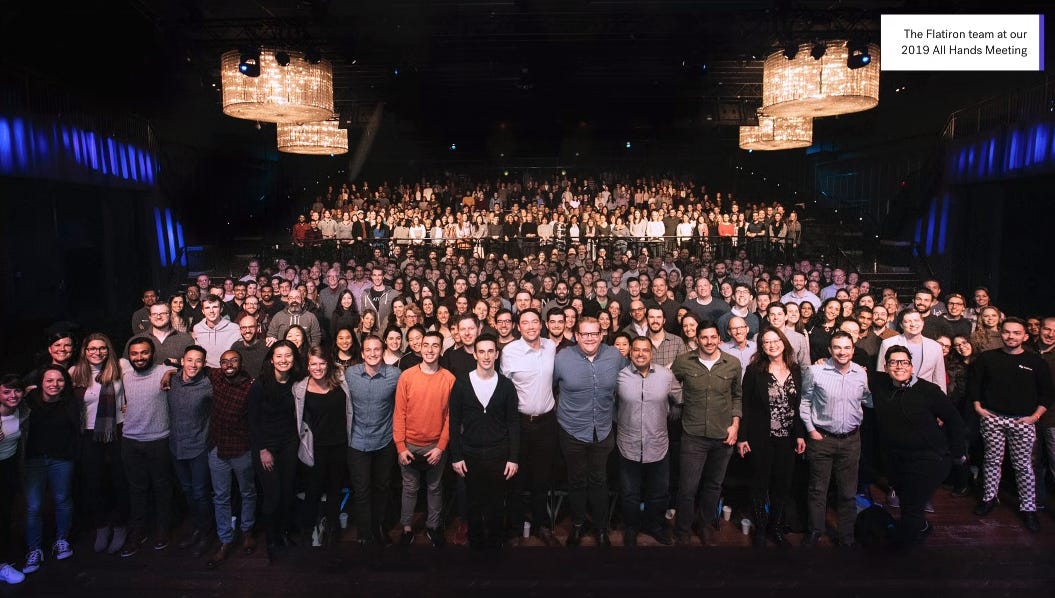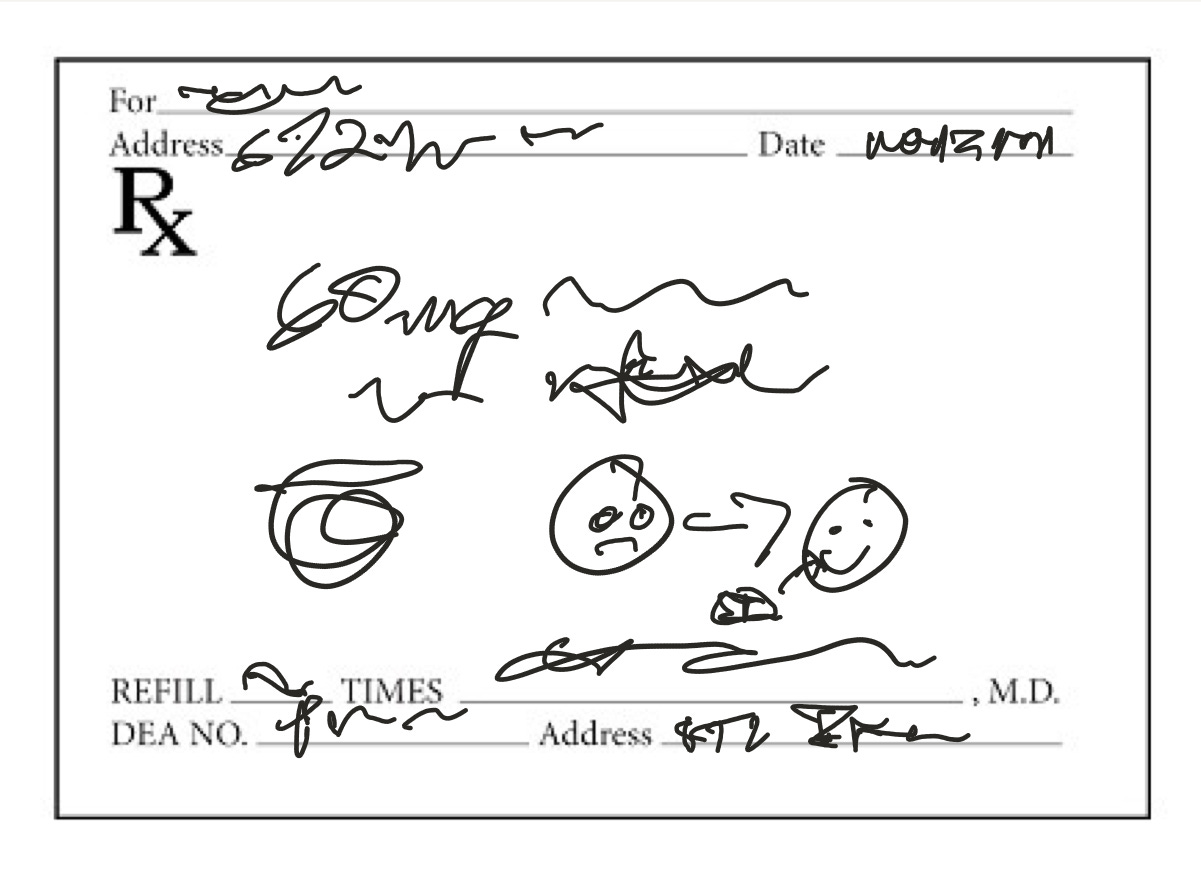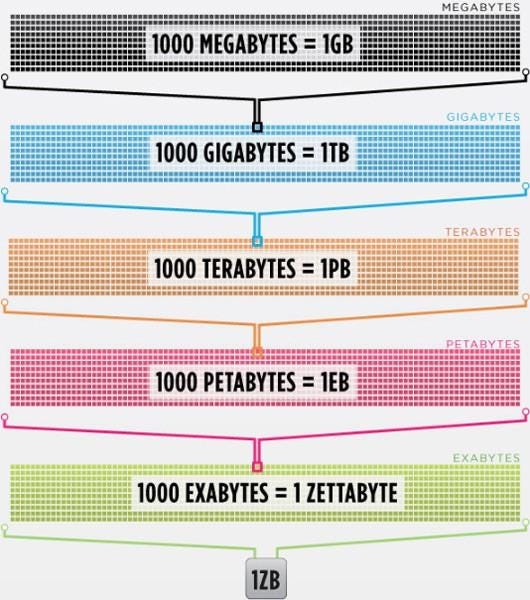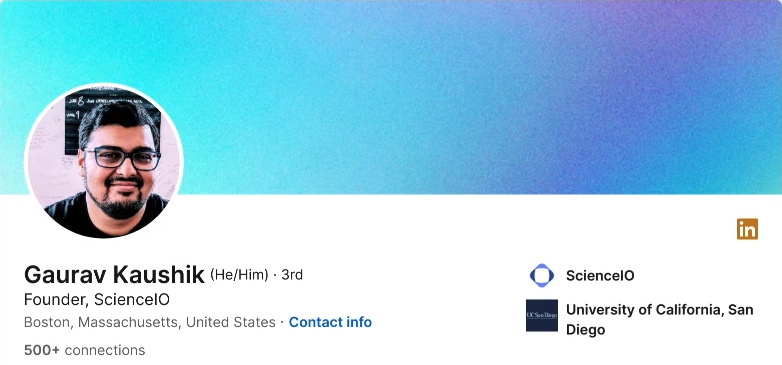Not Boring by Packy McCormick - The Model of Everything
Welcome to the 1,435 newly Not Boring people who have joined us since last Monday! Join 80,283 smart, curious folks by subscribing here: 🎧 To get this essay straight in your ears: listen on Spotify or Apple Podcasts (soon) Today’s Not Boring is brought to you by... Sprig Sprig is your all-in-one product research platform. Many of the world’s leading tech companies including Square, Adobe, Loom, Retool, Opendoor, and Chipper use Sprig to capture insights from their customers and build better products. Recently, Sprig rolled out two new solutions: video interviews and concept testing. Now, companies can have async video conversations with users, and can even share Figma designs at the same time to get rich feedback on concepts and prototypes that are still in development. If you build products, you should just try it for yourself. It’s all of your product research tools, in one place. The Sprig team knows that once teams start using it, they don’t stop, so it’s offering a free onboarding and 30-day trial to any enterprise company (~100,000+ users). Hi friends 👋, Happy Thursday! When I invested in ScienceIO early in Not Boring Capital’s life, I said that I’d write an investment memo on the company when they announced the raise. That was purely selfish: I figured that writing an investment memo would force me to figure out wtf the company actually does. Plus, I get to tell you about a company that I’m confident will be a unicorn and will help extend and save millions of lives, with *science*. Let’s get to it. The Model of EverythingInvestment Memo on ScienceIO In February 2018, Swiss pharmaceutical giant Roche bought NYC-based startup Flatiron Health for $1.9 billion. Flatiron, founded in 2012 by Nat Turner and Zach Weinberg, collects and organizes real-world clinical oncology data from the thousands of community clinics, medical centers, and hospitals across the country where it was previously siloed, and delivers clean data to drug development companies and researchers working to fight cancer. That’s an amazing mission and the sale was a big outcome, but Flatiron’s model had a challenge: people. Flatiron needed to hire tons of experts (oncologists and oncology nurses) to extract data from electronic health records into databases, where it could be used, understood, and manipulated to drive outcomes. Luckily, the Flatiron team was willing to take on that work (and cost) to help transform the way cancer is understood and treated, but the difficult unit economics hold other entrepreneurs back from creating the next “Flatiron for x.” Will Manidis, the co-founder and CEO of ScienceIO, told me that his big vision is to change that. “We want to make it 100x easier to start a company that looks like Flatiron. There should be people building Flatiron for everything.” So how do you do it? It’s as simple and as impossibly difficult as making healthcare data computable. That means transforming the 2 zettabytes of healthcare data created each year, most of which is messy and unstructured, into structured data that can be searched, analyzed, and mined for insights. That’s what ScienceIO does. ScienceIO decodes the language of medicine to unlock the full potential of healthcare data. Its industry-leading clinical Natural Language Processing (NLP) platform structures data in real-time to enable search, analysis, and insight generation. Yesterday, ScienceIO announced that it raised an $8M seed round from investors including Section 32, Sea Lane Ventures, Quiet Capital, Lachy Groom, Josh Buckley, Scott Belsky, Todd Goldberg, Rahul Vohra, Turner Novak’s Banana Capital, Ankur Nagpal, Austin Rief, Jack Altman, Pipe founder Harry Hurst, Earl Grey Capital, The Dorm Room Fund (where Manidis was a Managing Partner), and Not Boring Capital. It’s using the money to make healthcare data computable. I’ll get this confession out of the way upfront, and it may shock some of you: I do not personally know how to make healthcare data computable at scale. But Will and co-founder Gaurav Kaushik do, and today, I’m going to do my best to explain why I think they have the potential to build one of the most valuable companies in the Not Boring Capital portfolio. Let’s bring this company out of stealth by covering:
The Investment ThesisFirst things first: why did I invest in ScienceIO? In two years, ScienceIO has already built the largest healthcare AI training data set and is building infrastructure that companies and researchers across the industry can use to save time and money, develop new pharmaceuticals, treat patients better, and drive improved outcomes. The opportunity is massive. There is $4 trillion in annual healthcare spend in the US alone -- 17% of GDP -- and the system still relies on messy, unstructured data for everything from drug development to patient care. Since data underpins everything in healthcare, ScienceIO can sell to nearly any company in healthcare: it’s already working with large insurers, clinical trial research providers, pharmaceutical companies, and an academic medical center, highlighting the breadth of potential deep-pocketed clients. The quality of clients they’re working with already speaks to the fact that they really do have the best product in the market. Now that it has built the data set and models, ScienceIO is able to sell high-ACV, high-margin contracts and scale revenue very rapidly. More importantly, better data will mean better health for millions of people. So why hasn’t this been done before? All of this is really hard. No one’s ever come close to what ScienceIO has pulled off. The Challenge: Unstructured ZettabytesThink back to the last time you went to the doctor’s office and had to get a prescription. Your very smart doctor, who spent years and years and hundreds of thousands of dollars on medical school and just figured out what ailed you and how to fix it in five minutes, tells you they’re going to prescribe you something, whips out a pad of paper, and scribbles this: Healthcare data is a uniquely tricky beast. While not every document looks like a prescription note, more than 80% of healthcare data is unstructured, living in a digital format that requires manual labor to analyze, in images, or, like that script, in handwritten notes. Will put it simply: “Healthcare runs on notes, scans, and PDFs.” And there is a TON of it. Each year, the healthcare system creates two zettabytes of data. If you don’t know what that even means, don’t worry, I didn’t either. But I looked it up. A zettabyte is a trillion gigabytes. All of humanity only started moving a zettabyte of data across the internet -- with all of the shows, songs, tweets, likes, and more -- somewhere between 2012 and 2016, depending on when you believe we entered the Zettabyte Era.
So healthcare today produces twice as much data each year as all of humanity produced in a year less than a decade ago. That data comes from a ton of different sources:
That’s most of it, but there’s more. The system is woefully unprepared for all of that data. Historically, the healthcare industry has invested in protocols for the structured data it has, digitizing analog data but leaving it unstructured, and brute-forcing the unstructured data problem through manual labor. These solutions have plateaued. This is the challenge that Flatiron faced, and that was just cancer, in just the US, with just 280 community cancer centers, seven academic cancer centers, and 20 pharmaceutical companies. Flatiron employs 2,500 people, many of whom manually transcribe and tag data. It’s impossible to do that for all of the healthcare data in the world, particularly when it’s growing exponentially. In order to make progress in healthcare, we need to turn all of that messy, unstructured data into clean, structured data that researchers, pharmaceutical companies, doctors, insurance companies, and other medical professionals can actually use. That’s where Will and Gaurav come in. The Team: Building on a Strong FoundationIf anyone was going to build a venture-backed startup that uses NLP to make sense of healthcare data, it was going to be Will Manidis. ScienceIO is the marriage of machine learning and healthcare. Will is the marriage of machine learning and healthcare. It was meant to be. When Will was in high school, a time when most of us were just trying to get good grades and get into college, he was using large scale NLP to study cross-language allusions in early classical texts. NLP, or Natural Language Processing, sits at the intersection of machine learning and linguistics. Using NLP, computers can understand human language as it’s written or spoken. Siri and Alexa, for example, both use a combination of speech recognition and NLP to figure out what you’re saying and then make sense of it. Young Will ran early classical texts, like the Virgil’s Aenied or Silius’ Carthaginian Debates through NLP models to pick up cross-language allusions that humans couldn’t. Kid was wicked smart. As wicked smart Wills do, Will studied at a college right outside of Boston. He attended Olin College, an engineering-focused school founded in 1997. While in school, he worked two jobs: one, as a Partner and then Managing Partner at student-run venture fund Dorm Room Fund, and the other at therapeutics company Immuneering. Will told me he jumped into healthcare thanks to his experience spending a lot of his youth sick. At Immuneering, while, remember, still in college, he built out systems to accelerate the speed of clinical literature. After a year at Immuneering, he joined Cambridge-based Foundation Medicine, a decision insights company that helps doctors connect their patients to the best cancer treatment options, as a Visiting Researcher. At Foundation, Gaurav Kaushik was leading the real world data (RWD) team, which he started, focused on leveraging patient data to create solutions that advance patient care. Gaurav, too, has an absurdly strong background that laid the groundwork for what ScienceIO would become. I’m going to bullet out his LinkedIn so that when we talk about the crazy shit that ScienceIO is pulling off, you actually believe it:
I feel sufficiently underachieving at this point; luckily, that takes us back to Foundation, where Gaurav was running the RWD team. In 2018, Will joined Gaurav’s team to help develop AI tools that could identify patients with unmet needs and predict outcomes. (That same year, Roche acquired Foundation for $2.4 billion… sensing a theme). To do so, they built comprehensive views of patient health and outcomes and were able to understand what moves the needle for patients like never before. As one example, their team looked at patients with triple negative breast cancer (TNBC), a very harsh form of breast cancer that particularly affects women of color. They manually aggregated data for those patients and did an analysis that showed that they responded very well to a particular class of cancer therapies, but those therapies were off-label and very expensive. When they presented the data, both internally and at conferences, people were surprised. There were no active clinical trials for the therapies they’d identified in TNBC. Without the team and resources they had at Foundation, they never would have known that there was a therapy that could potentially work for these patients that should be accelerated for clinical studies and FDA approval. They were saving lives with data. After that experience, Will and Gaurav started asking themselves, “Who else are we missing out there? What stories aren’t being told because the data isn’t organized? What if we could tell these stories at scale?” They decided to find out. In 2019, Will dropped out of Olin to become a Thiel Fellow. (Fun fact: since he was already gainfully employed and didn’t need the money to survive, he took the $100k and invested $10k in 10 companies. He’s built an incredibly strong portfolio.) They both left Foundation, and launched Cascade.Bio (which they later rebranded to Science.io in a story for another day). The plan: build the “Model of Everything” for healthcare. To learn how ScienceIO built the Model of Everything for healthcare, why it’s such a good venture business, and where it (and healthcare) is going from here… How did you like this week’s Not Boring? Your feedback helps me make this great. Loved | Great | Good | Meh | Bad Thanks for reading and see you on Monday! Packy If you liked this post from Not Boring by Packy McCormick, why not share it? |
Older messages
Log in to Not Boring by Packy McCormick
Tuesday, October 5, 2021
Click here to log in
Log in to Not Boring by Packy McCormick
Tuesday, October 5, 2021
Click here to log in
Log in to Not Boring by Packy McCormick
Tuesday, October 5, 2021
Click here to log in
Dad Life
Monday, October 4, 2021
Plus Not Boring Founders
Existential Optimism
Monday, September 27, 2021
Or what to do when you control your own destiny
You Might Also Like
🔮 $320B investments by Meta, Amazon, & Google!
Friday, February 14, 2025
🧠 AI is exploding already!
✍🏼 Why founders are using Playbookz
Friday, February 14, 2025
Busy founders are using Playbookz build ultra profitable personal brands
Is AI going to help or hurt your SEO?
Friday, February 14, 2025
Everyone is talking about how AI is changing SEO, but what you should be asking is how you can change your SEO game with AI. Join me and my team on Tuesday, February 18, for a live webinar where we
Our marketing playbook revealed
Friday, February 14, 2025
Today's Guide to the Marketing Jungle from Social Media Examiner... Presented by social-media-marketing-world-logo It's National Cribbage Day, Reader... Don't get skunked! In today's
Connect one-on-one with programmatic marketing leaders
Friday, February 14, 2025
Enhanced networking at Digiday events
Outsmart Your SaaS Competitors with These SEO Strategies 🚀
Friday, February 14, 2025
SEO Tip #76
Temu and Shein's Dominance Is Over [Roundup]
Friday, February 14, 2025
Hey Reader, Is the removal of the de minimis threshold a win for e-commerce sellers? With Chinese marketplaces like Shein and Temu taking advantage of this threshold, does the removal mean consumers
"Agencies are dying."
Friday, February 14, 2025
What this means for your agency and how to navigate the shift ͏ ͏ ͏ ͏ ͏ ͏ ͏ ͏ ͏ ͏ ͏ ͏ ͏ ͏ ͏ ͏ ͏ ͏ ͏ ͏ ͏ ͏ ͏ ͏ ͏ ͏ ͏ ͏ ͏ ͏ ͏ ͏ ͏ ͏ ͏ ͏ ͏ ͏ ͏ ͏ ͏ ͏ ͏ ͏ ͏ ͏
Is GEO replacing SEO?
Friday, February 14, 2025
Generative Engine Optimization (GEO) is here, and Search Engine Optimization (SEO) is under threat. But what is GEO? What does it involve? And what is in store for businesses that rely on SEO to drive
🌁#87: Why DeepResearch Should Be Your New Hire
Friday, February 14, 2025
– this new agent from OpenAI is mind blowing and – I can't believe I say that – worth $200/month
